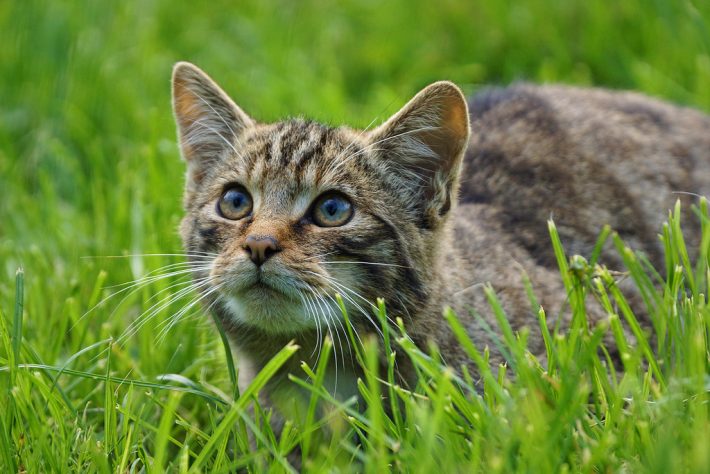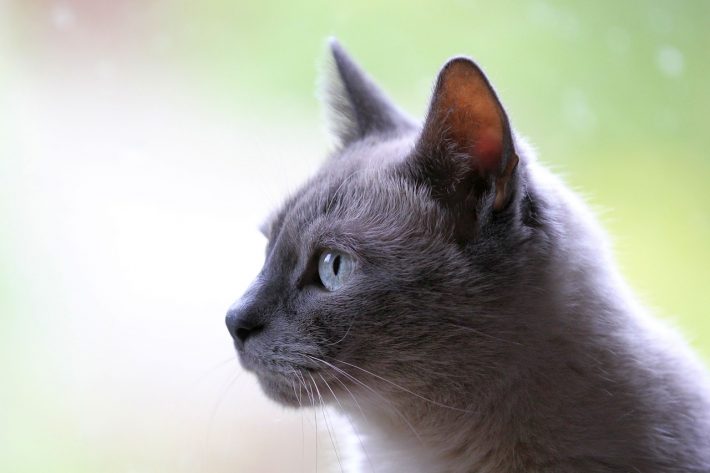Wildcat, feral or stray? The difficulties of cat categorisation explored
Difficulties in identifying wildcats and domestic cats are threatening conservation efforts, according to experts at the University of Exeter and University of Auckland.

Longstanding conservation efforts to restore the native wildcat are ongoing in Britain and New Zealand. However, difficulties in differentiating wildcats from domestic cats threaten conservationists’ attempts to protect biodiversity.
What are the differences between wildcats, feral, stray and pet cats? Wildcats (Felis sivestris) are a native species of cat that are particularly fierce, whereas feral, stray and pet cats are all domestic types of cats – they just interact differently with humans. Feral cats are those who may not have been owned by humans at any point, so they tend to be scared of us. However, stray cats were owned by humans at some point, but have been separated from their owner. They’re usually friendly towards humans as a result, just like ordinary pet cats.
Researchers, in a collaborative study between the University of Auckland and the University of Exeter, interviewed people in both countries about attitudes toward wildcat conservation. Dr Alexandra Palmer from the University of Auckland carried out 59 interviews with wildcat stakeholders, including some of Maori descent. Meanwhile, Dr Virginia Thomas from the University of Exeter interviewed 26 stakeholders at four wildcat breeding facilities across Britain.
Findings published in the People and Nature paper show that the British public is largely against culling feral cats – even in the interest of protecting native wildcats. On the other hand, New Zealanders are much less sentimental over pest management required to protect native species.
In line with sentiments held by the public, British conservationists use ‘trap, neuter, vaccinate, release’ programmes to manage feral cats without culling them. This means conservationists can ensure wildcats are not killed if accidentally mistaken for a feral cat. Killing feral cats is legal however, with some gamekeepers culling them as part of their own predator control programmes.

Wildcats are protected by UK law, so culling them is an offence. However, it can be extremely difficult to distinguish between domestic and wildcats due to their similar look. The situation is further complicated by domestic-wildcat hybrids making legal distinction difficult, and rendering prosecution almost impossible under current legislation.
In the UK, there is also no legal definition of a wildcat, making them extremely difficult to protect. Feral cats may be legally culled, but are protected by the Animal Welfare Act (2006) – So any culling must be done humanely. Pet cats however, are classed as property and protected by property ownership laws, making cat protection overall quite a legal grey area.
Dr Thomas explains “In theory, there are distinguished boundaries between pets, wildcats, unprotected feral cats, strays and hybrids. However, people draw boundaries between cat categories differently – meaning laws outlining protection of specific categories have limited effect.”
Different values and attitudes towards cats also complicate the matter. Some people will see a cat and automatically assume it’s feral, whilst others will assume it’s a wildcat, or even a pet cat.
By contrast, in New Zealand, organisations tend to accept the culling of feral cats to protect native species. The difficulty here is that pet cats may die by mistake after being caught in traps intended for feral cats. In this case, there is a legal issue regarding whether cats are genuinely feral, or simply stray.
“Without a quick, easy and reliable method of differentiating species, it’s unlikely that legal protection of wildcats will be very effective,” continued Dr Thomas. “Reducing gaps between law and practice would require agreement from cat management services to stick to the exact laws, despite potential practical implications.”
Article based off a University of Exeter press release.
Read more:
, & (2023). Categorisation of cats: Managing boundary felids in Aotearoa New Zealand and Britain. People and Nature, 00, 1–13. https://doi.org/10.1002/pan3.10519
Like what we stand for?
Support our mission and help develop the next generation of ecologists by donating to the British Ecological Society.